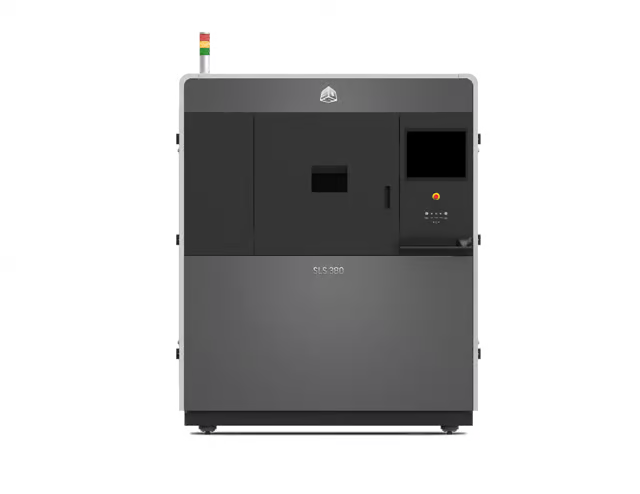MJF or SLS?
Our most frequently asked question, answered.
What is the difference between MJF (Multi Jet Fusion) and SLS (Selective Laser Sintering) 3D Printing?
Both MJF and SLS are popular 3D printing technologies, particularly for producing functional prototypes and end-use parts. Understanding these differences can help you select the right technology for your needs and applications.
Here’s a comparison between the two:
Technology Basics
MJF
- Uses a fusing agent that is jetted onto a bed of powder material.
- Heat is applied to fuse the powder where the fusing agent is deposited.
- Detailing agents can be used to improve feature resolution and part details.
- Build Volume 380 x 284 x 380 mm.
SLS
- Involves a laser that selectively sinters powdered material layer by layer.
- The laser heats the powder to just below its melting point to fuse particles together.
- The build platform is lowered to add new layers until the object is built.
- Build volume 300 x 300 x 300 mm up to 750 x 550 x 550 mm.


Materials
MJF
- Primarily works with nylon thermoplastic polymers like PA 12, PA 11, and some flexible materials like TPU.
- Ongoing development for other specialized materials.
SLS
- Wide variety including nylon (PA 12, PA 11), TPU (thermoplastic polyurethane), and other composites.


Part Quality
MJF
- Generally, smoother surface finish compared to SLS.
- Higher dimensional accuracy and more detailed features.
- Consistent mechanical properties throughout the part.
SLS
- Slightly rougher surface finish due to the laser sintering process.
- High strength and durability.
- Potential for slight warping, but effective post-processing can address many surface issues.


Speed
MJF
- Typically faster because it can scan and fuse an entire layer in a single pass.
- Uniform thermal process can reduce cooling and post-processing time.
SLS
- Usually slower, as the laser has to trace the geometry of each layer point by point.
- Cooling periods are longer to avoid warping and ensure dimensional stability.


Cost
MJF
- Often lower on a per-part basis for medium to high-volume production runs due to faster build times and efficient use of material.
SLS
- Might be more costly on a per-part basis for larger runs but can be more cost-effective for smaller volumes or unique geometries.
Accuracy and Tolerances
MJF
- Higher precision with typical layer thickness around 80 microns.
- Dimensional accuracy ± 0.3% (with lower limit on ± 0.2 mm)
- Minimum detail 0.25 mm
- Tensile strength XY: 48 MPa Z: 48 MPa
- Tensile Modulus XY: 1700 MPa Z: 1800 MPa
- Elongation at break XY: 20% Z: 15%
SLS
- Good precision with typical layer thickness around 100-120 microns.
- Dimensional accuracy ± 0.3% (lower limit of ± 0.3 mm)
- Minimum detail 0.30 mm
- Tensile Strength XY: 48 MPa Z: 42 MPa
- Tensile Modulus XY: 1650 MPa Z: 1650 MPa
- Elongation at break XY: 18% Z: 4%


Post-Processing
MJF
- Needs less post-processing to achieve a smooth surface and uniform appearance.
- Parts typically require cleaning to remove excess powder.
SLS
- May require more intensive post-processing like sandblasting or media tumbling to achieve smoother surfaces.
- Similar cleaning process to remove excess powder.


Ideal Applications
MJF
- Parts requiring consistent isotropic mechanical properties.
- Suitable for functional prototypes, end-use parts, and small to medium batch production.
- Ideal for parts requiring high detail and fine feature detail, such as consumer products and mechanical components.
SLS
- Also produces strong, functional 3D printed parts.
- Functional prototyping and small batches of en-use products.


Our Conclusions
In conclusion, while both MJF excel in producing high-strength, durable parts suitable for prototyping and end-use, they cater to different specific needs. MJF offers faster production speeds, smoother surface finishes, and higher precision, making it ideal for detailed components and medium to high-volume production runs. In contrast, SLS provides a broader range of materials and is particularly valuable for highly complex geometries and small batch productions where robustness is critical. Choosing between the two depends on the specific requirements of your project, including part intricacies, material needs, and production volume.
If you’d like to know more, here or here are a couple of comparisons made by HP wich include interesting case studies.
You can always contact us for more information, email us here. We can help you choose the best technology for your project or even with the whole product development process.
Know more about Upsurge and our capabilities.
MJF or SLS 3D Printing
